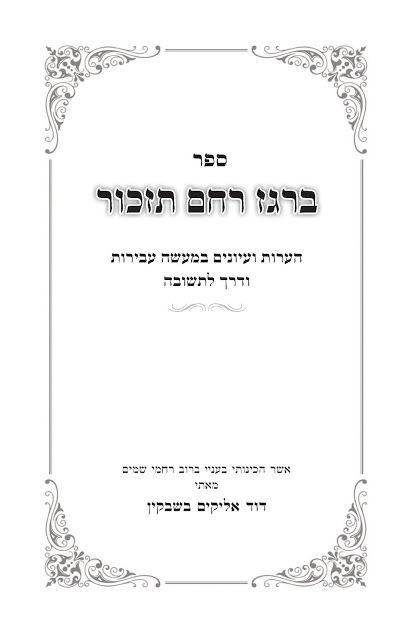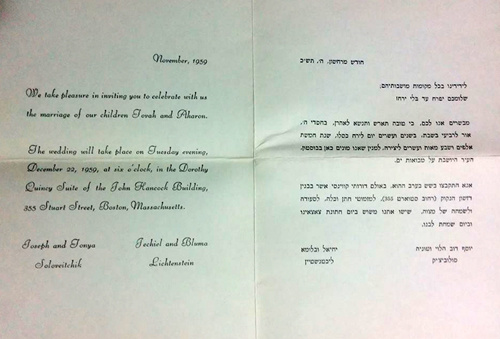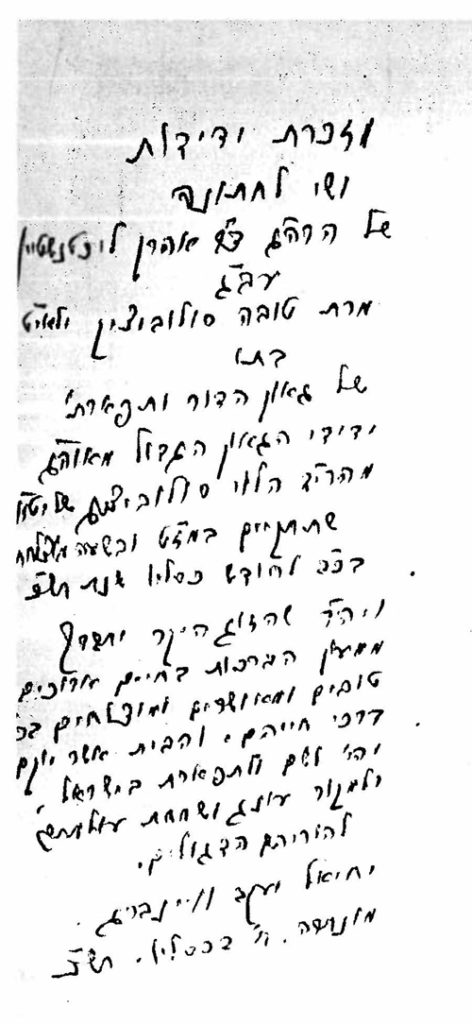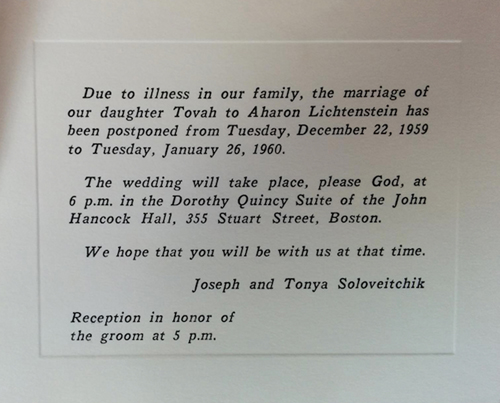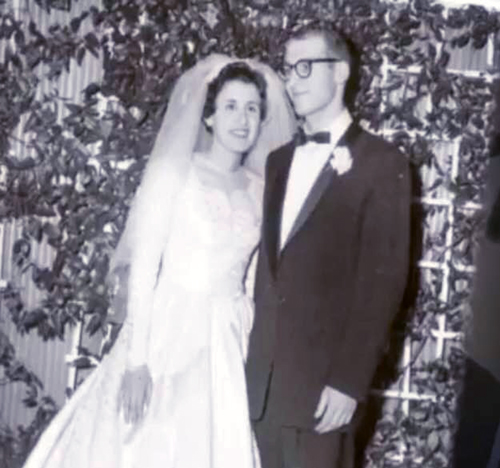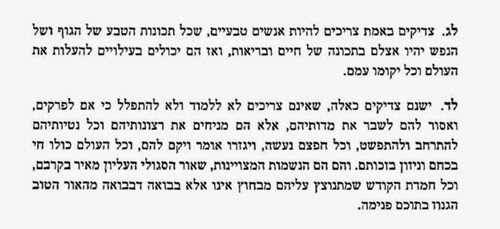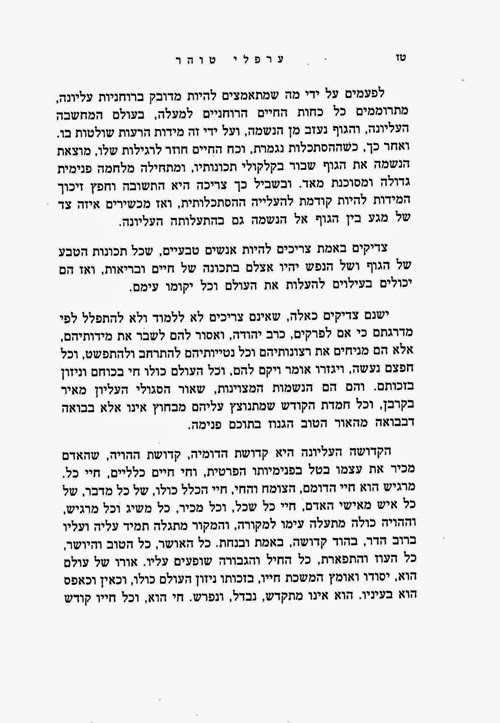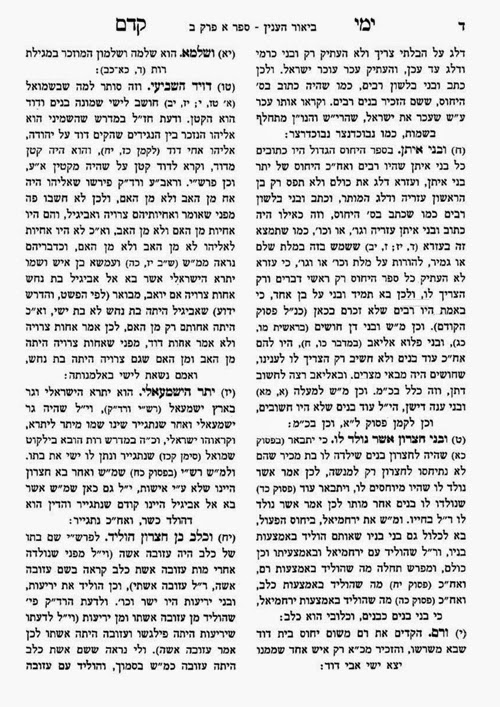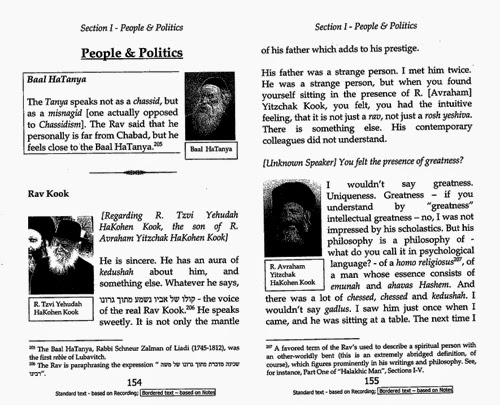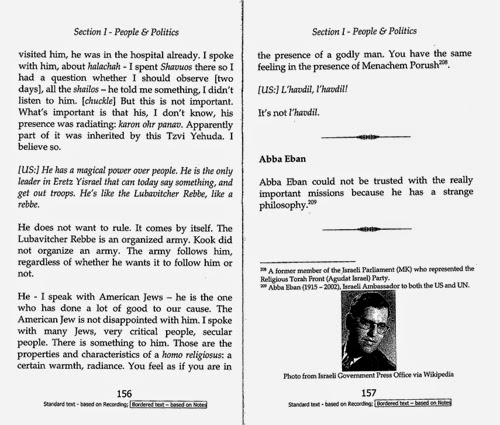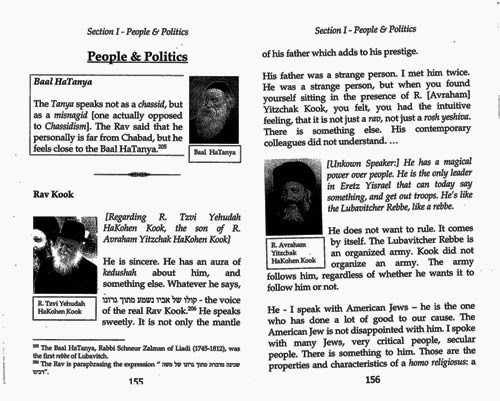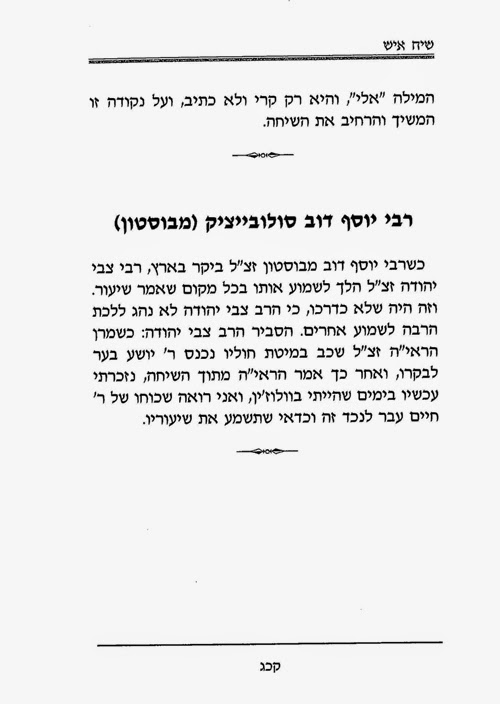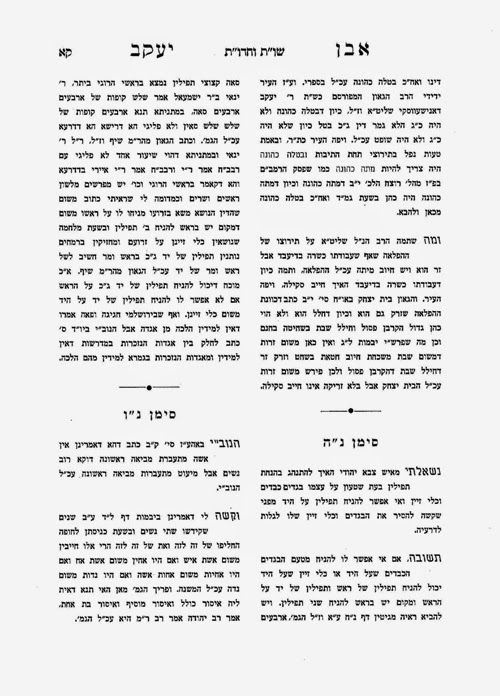New Seforim and Books 2015
by Eliezer Brodt
What follows is a list of new seforim and books I have seen around in the past few months. Some of the titles are brand new others are a bit older. I am well aware that there are new works worth mentioning that are not included. Due to lack of time I cannot keep track of every book of importance nor comment properly on each and every work. I just try to keep the list interesting. For some of the works listed I am able to provide a Table of Contents or a sample feel free to email me at eliezerbrodt@gmail.com. I hope you enjoy!
א. חומש ויקרא עם ביאור מעט צרי על תרגום אונקלוס, רמו עמודים
ב. מדרש אסתר רבה, מהדיר
יוסף תבורי וארנון עצמון, קלג + 284 עמודים ,מכון שכטר, [ראה
כאן
וכאן]
ג. מדרש חדש על התורה [מהדיר: גילה וכמן], עא +297 עמודים,
מכון שכטר
ד. משלי עם רש”י [על פי כ”י] עם ד’ פירושים קדמונים,
מראה רחל, מאת ר’ ישראל הרצג, ור’ יוסף קמנצקי, ריד עמודים
ה. ספר חסידים, כתבי
יד פארמא ורומא, מכון אוצר הפוסקים, תקנא
עמודים +234 עמודים מפתחות
ו. ספר המכתם, ברכות פסחים, ראש השנה [כולל מבוא חשוב מידידי
דר’ פנחס רוט], הוצאת אהבת שלום
ז. צרור החיים לר’ אברהם סבע [בעל ה’צרור המור’] על מסכת אבות
[מכ”י, על פרקים ד-ו], מכון בן צבי, 211 עמודים
ח. ספר הגור, פירוש קדמון על פירוש רש”י לתורה, שמות, רכד
עמודים
ט. ר’ משה ן’ מכיר, סדר היום, עם גלי’ עץ ארז, מאת ר’ אברהם
דויטש, תתה עמודים
י. ר’ חיים ויטל, דרך חיים, אהבת שלום, כולל ק’ שנות חיים על
ר’ חיים ויטל, נד+פד עמודים
יא. שפתי דעת, דרשות על התורה, לבעל הכלי יקר, מכון עצי
אלמוגים, ב’ חלקים [כולל מבוא חשוב עליו]
יב. ר’ יחיאל מיכל, נזר הקודש, על מדרש בראשית רבה, ג’ חלקים,
מכון זכרון אהרן
יג. רבי כליפא בן מלכה, כף נקי השלם, 444 עמודים [כולל חומר
חשוב]
יד. שמחת בית השואבה להגר”א, ר’ נחמיה פעפער, מכון הגר”א, רסג עמ’ + ספר ההספדים על הגר”א, קסג עמודים
טו. תהלים עם פי’ מדרש חכמים לרבנו פנחס מפאלאצק, [על פי
כ”י ודפוס ראשון], תפח עמודים
טז. ר’ חיים רפאפורט, זכר החיים, וזכר שמחה, לר’ שמחה רפאפורט,
שם עולם, 73+ 387+ 114 עמודים
יז. ר’ יוסף עהרענבערג, דברי אמת דרושים, ילקוט דברי אמת, תקפג
עמודים
יח. ר’ מרדכי סופר, סופר המלך, [בית אפרים, פליטת
סופריהם:מאמרים, פאר הסופר: תולדותיו], רצא עמודים
יט. ר’ צדוק הכהן, צדקת הצדיק עם מקורות וציונים, תלב עמודים
כ. ר’ שמעון הארקי, שבעים תמרים, על צוואת רבינו יהודה החסיד
ז”ל, כולל הערות ע”י ר’ פינחס וואלהענדלער, רמז עמודים
כא. ר’ יוסף זונדל הוטנר, בכורי יוסף, כולל פרקי חיים,
שו”ת וחידושים, תשובות חדשות מכ”י וחידושי יו”ד, רלז עמודים
כב. אור שמח, מדע אהבה זמנים, עם ביאורים והערות ‘אורה ושמחה’,
תתקלז עמודים
כג. טוטפות, אוסף כתבי ידות, י”ל לקראת שמחת הבר מצוה של
יאיר מנצור, עה עמודים
כד. ר’ מאיר אריק, טל תורה, הגהות הערות וביאורים על ש”ס
בבלי וירושלמי, כולל הערות מראה מקומות השוואות, מפתחות והוספות מכ”י, תרפו עמודים
כה. גנזים ושו”ת חזון איש חלק ד, תסג עמודים
כו. ר’ צבי פסח פרנק, מקראי קודש שבת, ב, שי עמודים
כז. ר’ אברהם פעסין, תמורת איל, מסכת מגילה, תשיז עמודים
כח. לצדדין קתני, ר’ שאול אלתר, קובץ הערות והארות שנכתבו על
צדדי הספרים תפ עמודים
כט. ר’ שלום לוין, שיעורי הלכה למעשה, בשלחן ערוך הרב,
או”ח, תקלז עמודים
ל. ר’ אריה וסרמן, אוצר הכיפה, ב’ חלקים, הלכה, מנהג חקר
ועיון, תרכו+תשפב עמודים [ניתן לקבל תוכן הענינים]
לא. שיעורי רבנו משולם דוד הלוי, דרוש ואגדה, ביאורי תפילה
עובדות, עניני השעה, תשיד עמודים
לב. אעלה בתמר, מתורת בריסק, משולחנו של מרן רבינו בעל אילת
השחר, רפא עמודים
לג.קונטרס ט”ו בשבט, בהלכה ואגדה, קטז עמודים
לד. ר’ יעקב בלוי, ברכת
יעקב, הלכות ברכות ותפילה, שיט עמודים
לה. איש על העדה, ב הליכות והנהגות של רבינו הגרי”ש
אלישיב זצוק”ל, רצז עמודים
לו. ר’ חיים פאללאק, מבאר השבת, סעודת ליל שבת קודש, תשלט
עמודים
לז. אנציקלופיה תלמודית, כרך לד, לא ילבש- לא תעשה [ניתן לקבל
תוכן הענינים]
לח. ר’ מרדכי גרוס, אדמת קודש, הלכות והליכות התפלה וההשתטחות
על ציוני קדמונינו גדולי ישראל, תתסח עמודים
לט. ר’ משה גלביין, פני החמה, ביאורים וחידושים לסימני מנין
הפסוקים, רלא עמודים
מ. ר’ יעקב סקוצילס, קונטרס אהל יעקב על הלכות שנים מקרא ואחד
תרגום, קט עמודים
מא. המעין גליון 212
מב. היכל הבעש”ט, גליון לו
מג. מן הגנזים, ספר שלישי, אהבת שלום, תכב עמודים
מד. אסיף ב, [ב’ חלקים]
מה. המשביר א , [מוקדש לתורת ר’ עובדיה יוסף] [ניתן לקבל תוכן
הענינים]
מחקר ועוד
א. ר’ משה שבת, השתלשלות התורה [ספרד-מזרח], כולל חומר חשוב על
זמן הגאונים בדגש על ישיבות ספרד, תנ עמודים
ב. ר’ חנוך טוביאס, סופה וסערה, הפרשיות הגדולות שהסיערו את
עולם ההלכה, ראשון בסדרה [מהדורה שניה], 126 עמודים [ר’ סעדיה גאון ור’ אהרן בן
מאיר הירושלמי המזויף ‘הלעיטהו לרשע וימות’]
ג. ר’ חנוך טוביאס, סופה וסערה, הפרשיות הגדולות שהסיערו את
עולם ההלכה, רביעי בסדרה, 160 עמודים [מל ולא טבל גוי של שבבת או יהודי של שבת
מצה מריבה- מצות מכונה חמץ גמור או הידור מצוה מאבק ופולמוס סביב היתר המכירה]
ד. יעקב דינקל, מערכות השמיטה, השתלשלות שמירת השביעית בארץ
הקודש וסקירת שנות השמיטה משנת תק”ב, 388 עמודים
ה. אהרן סורקסקי, החוט המשולש, שלושת הגאונים אדירי התורה, ר’
דוד פרידמן, ר’ יצחק אלחנן ספקטר, רבי יצחק יעקב רבינוביץ מפניבז’, רנא עמודים
ו. חרבא דמשה, מהדיר יובל הררי, 213 עמודים [הדפסה שנייה]
ז. המקרא בפרשנות חז”ל, יואל ועמוס, יצחק פנקובר ומנחם בן
ישר, בר אילן, 928 עמודים
ח. קובץ על יד, כרך כג, [ניתן לקבל תוכן הענינים]
ט. שמא פרידמן, מחקרי לשון ומינוח בספרות התלמודית, האקדמיה
ללשון העברית, 565 עמודים [ניתן לקבל תוכן הענינים]
י. מנחם קרן-קרץ, מרמורש סיגט, אורתודוקסיה קיצונית ותרות
יהודית חילונית למרגלות הרי הקרפטים, מפעל דב סדן, 316 עמודים
יא. יונתן גרוסמן, אברהם סיפורו של מסע, ידיעות ספרים, 566
עמודים
יב. יעקב ברנאי, המראה של אירופה, פרקים בתולדות הקהילה
היהודית באזמיר במאות השבע עשרה והשמונה עשרה, [כולל בין השאר הרבה חומר על ה’כנסת
הגדולה’], כרמל 433 עמודים
יג. הספרייה של תנועת ההשכלה, יצירתה של רפובליקת הספרים בחברה
היהודית במרחב הדובר גרמנית, עם עובד, עורכים: שמואל פיינר, זהר שביט ועוד, 503
עמודים
יד. עזגר גולד, על הנסים ועל הטבע, עיון פילוסופי בספרות
ההלכה, בר אילן 334 עמודים
טו. בנימין בראון, תנועת המוסר הליטאית, אישים ורעיונות,
אוניברסיטה משודרת 178 עמודים
טז. יצחק מייטליס, פרשת דרכים, מבט ארכאולוגי וגאוגרפי בפרשיות
השבוע, מגיד, 430 עמודים
יז. אריה מורגנשטרן, דוחקי הקץ משיחיות לאחר המשבר השבתאי,
מחקרים ומקורות, 559 עמודים
יח. אבינועם רוזנק, הגיונות במחשבת ישראל, בעקבות שיעוריו של
אביעזר רביצקי, מרכז זלמן שזר, 386 עמודים
יט.
אקס ליבריס, גיש עמית, קיבוץ המאוחד, 220
עמודים
כ. היסטוריה מתנגשת וקיום משותף, פרספקטיבות חדשות על המפגש
היהודי פולני, עורך דניאל בלטמן, מגנס,
396 עמודים
כא. יואל בן נון, המקור הכפול, השראה וסמכות במשנת הרב קוק
לאחד את הבלתי מתאחד, ספריית הילל בן
חיים, 438 עמודים
כב. רות קרא-איוונוב קניאל, קדשות וקדושות, אמהות המשיח במיתוס
היהודי, ספריית הילל בן חיים 356 עמודים
כג. מ.מ. סילבר, בשליחות המערב, מבט אחר על ההיסטוריה היהודית
המודרנית, ספריית הילל בן חיים, 334
עמודים
כד. מהר”ל אקדמות, פרקי חיים, משנה, השפעה, עורך אלחנן
ריינר, מרכז זלמן שזר, 602 עמודים [ניתן לקבל תוכן הענינים] [מצוין]
כה. עדה רפפורט-אלברט, חסידים ושבתאים אנשים ונשים, מרכז זלמן
שזר, 522 עמודים
כו. אלי מוסקוביץ היהודים של הטיטאניק, כרמל, 222 עמודים
כז. חנה ארנדט גרשום שלום, חליפת מכתבים הוצאת בבל, 512 עמודים
כח. מיכל שאול, פאר תחת אפר, החברה החרדית בישראל בצל השואה
1945-1961, בן צבי, 492 עמודים
כט. סידרא כט, 194 עמודים
ל. דעת 78, 182 עמודים
לא. בד”ד 29
לב. נטועים 19 ניתן לקבל תוכן הענינים
לג. עת לחננה, הרב צבי הירש קלישר וההתעררות לציון, עורך אסף
ידידיה, בן צבי, 275 עמודים
לד. נועם זדוף, מברלין לירושלים ובחזרה, גרשם שלום בין ישראל
וגרמניה, כרמל, 484 עמודים
English
1. Jordan S. Penkower, Masorah and text Criticism in the early Modern Mediterranean, Moses Ibn Zabara and Menahem De Lonzano, Magnes Press, 343 pp. [Beautiful!]
2. Haym Soloveitchik, Collected Essays 2, Littman Library, 425 pp. [A Masterpiece]
3. R. Jonathan Eibeschütz, And I Came this Day unto the Fountain, ואבוא היום אל העין, Critically Edited and Introduced by Paweł Maciejko, With Additional Studies by Noam Lefler, Jonatan Benarroch and Shai Alleson Gerberg, 2014, 360 pp.
4. Sabbatean Millenarianism in the Seventeenth Century: A Study of Moshe Abudiente’s Fin de los Dias, Avraham Elqayam המסע לקץ הימין: בשורת הגאולה השבתאית למשורר משה
בן גדעון אבּודיֶנטֵי, 504 pp.
5. Rabbi Klein, Lashon Hakodesh History, Holiness and Hebrew, Mosaica Press, 289 pp.
6. Rabbi Hool, The Challenge of Jewish History, the Bible, The Greeks and the Missing 168 Years, Mosaica Press, 256 pp.
7. Dovid Lichtenstein, Headlines: Halachic Debates of Current Events, OU Press, 462 pp.
8. Elisheva Baumgarten, Practicing Piety in Medieval Ashkenaz, Penn Press, 334 pp.
9. Marc Saperstein, Leadership and conflict: Tensions in Medieval and Early Modern Jewish History and Culture, Littman Library, 379 pp.
10. David B. Ruderman, A Best Selling Hebrew Book of the Modern era: The Book of the Covenant of Pinhas Hurwitz and its remarkable Legacy, University of Washington, 172 pp.
11. Michael J. Broyde and Ira Bedzow, The Codification of Jewish Law and an Introduction to the Jurisprudence of the Mishna Berura, Academic Studies Press, 387 pp.
12. Dialogue 5
13. Hakirah 18

